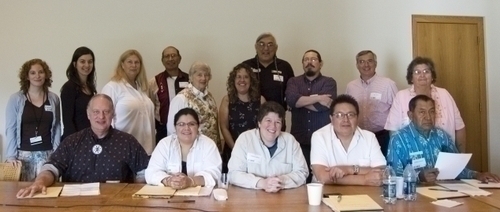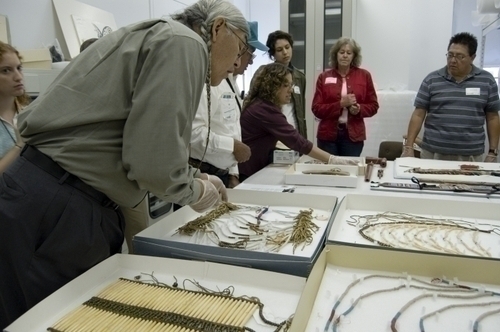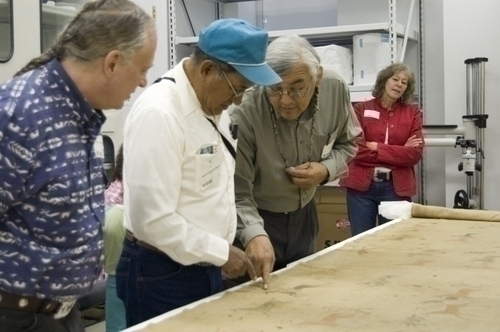Tipi Exhibition Planning Meeting
In the popular imagination, the tipi has come to represent a common stereotype about how all Native American people used to live. In truth, however, it is a specific cultural expression of the Native peoples of the Great Plains region of North America: the primary means by which they organized their lives, families and communities. Today, Plains people live in modern homes, but the tipi remains an essential architectural form used by many for celebratory and ceremonial occasions. While the tipi has been featured in other exhibitions, the Brooklyn Museum exhibition, scheduled to open to the public in Fall 2009, will be unique because it takes the tipi as the point of departure to explore the numerous, complex sub-themes that place it at the center of Plains social, religious, and creative traditions.
On June 15, the first of two planning meetings was held at the Brooklyn Museum in order to determine the themes of the exhibition. A diverse group of ten consultants including scholars, tribal representatives and artists attended the meeting, along with the three exhibition curators (Nancy Rosoff, Susan Kennedy Zeller and Tim Ramsey), as well as other staff members.

Left to right sitting: Tim Ramsey (Southern Cheyenne-Choctaw), Teri Greeves (Kiowa), Christina Burke (Philbrook Museum), Derek Big Day (Crow), Heywood Big Day (Crow)
Left to right standing: Miranda Applebaum, Rima Ibrahim, Susan Kennedy Zeller, Don Moccasin (Rosebud Lakota Sioux), Barbara Hail (Haffenreffer Museum), Nancy Rosoff, Gerard Baker (Mandan-Hidatsa), Bently Spang (Northern Cheyenne), Dan Swan (Sam Noble Museum), and Mary Lou Big Day (Crow).

Consultants examine Plains objects from the Brooklyn Museum’s collection.

Tim Ramsey, Heywood Big Day and Gerard Baker examine the drawings on a tipi liner that was owned by the great Hunkpapa Sioux leader Rain-In-The-Face (ca. 1835-1905). Rain-In-The-Face was one of the Sioux leaders who fought and defeated General Custer at the Battle of Little Big Horn in 1876. A tipi liner is hung around the inner tipi wall as insulation and decoration. The drawings on this liner depict battle scenes and religious ceremonies. This liner has never been studied or published and a special consultation meeting with other experts will be held at the Museum on September 7.
All photos by Rebecca Greenberg

Nancy Rosoff, Andrew W. Mellon Curator and Chair of the Arts of the Americas. Prior to joining the Brooklyn Museum in 2001, she served as Collections Manager and Assistant Director for Museum Operations at the New York Historical Society, and, before that, as an Associate Curator at New York’s National Museum of the American Indian, Smithsonian Institution (formerly the Museum of the American Indian, Heye Foundation). Rosoff received a bachelor’s degree from Connecticut College and a master’s degree in anthropology from the University of California, Los Angeles.
